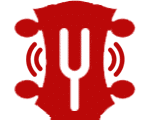Ukulele tunings

Ukulele tunings are identified starting with the top string (the fourth string), which is nearest your head. The groups of letters included in a particular ukulele tuning indicate the pitch to which each string is tuned.
Common ukulele tunings
Standard Tuning
So, the standard and the most common uke tuning is gCEA. Note, that the top G string is actually higher than the C string below it. This is known as re-entrant tuning, or also “High G on top.” or just High G tuning. It’s also known as GCEA tuning and Standard C tuning. Many players who came to the ukulele from the guitar prefer Low G tuning, however.[/vc_column_text]
Low G Tuning
Low G tuning – for fuller and deeper sound of your ukulele. Low G is the same as the Standard G-C-E-A, tuning except the G-string which is tuned an octave down. However, if you want to tune your ukulele to low G tuning, you need a special low G string set for your ukulele.
Baritone Ukulele Tunings
Standard tuning for the baritone ukulele is non-reentrant. It has the tuning of D3-G3-B3-E4. Baritone ukulele is, in fact, tuned the same as the four highest guitar strings. The result is a nice and deep sound. The problem, however, is that the sound is not going to be as crisp and as bright as some of the other uke tunings. The baritone can be alternatively re-entrant tuned to G-C-E-A.
High D Baritone Tuning
The standard tuning for baritone is non-reentrant or to D-G-B-E, The baritone can be alternatively tuned with the D string an octave higher than non-re-entrant tuning. High-D baritone ukulele requires a different D-string.
English Uke Tuning
English tuning is good for soprano ukuleles or banjoleles. Many musicians find this tuning to be sweeter in tone. English tuning is also known as a “D” tuning, and has the same amount of intervals as standard tuning but every string is tuned up a whole step higher. Please note that if you want to tune your ukulele to English tuning, you need a special English tuning string set.
Canadian Tuning
Canadian tuning is almost identical to English A4–D4–F♯4–B4 tuning except you tune the top A string down an octave. This tuning is popular for concert and tenor ukuleles.
Slide Uke Tuning
Slide tuning is G- C- E- A#. When strummed open, you will hear C7 chord. The idea is that every fret you move up makes a 7th chord that is a half step higher.
Slack Key Uke Tuning
Slack uke tuning is G- C- E- G. In order to use your familiar chords in this tuning, you just need to adjust the first string fingerings.
Half Step Down tuning
If you want to tune your ukulele half step down from Standard G–C–E–A tuning is easy. Just drop the pitch of each string down to the next note so your strings become F#–B–D#–G#.
Full Step Down tuning
Want to tune you uke full step down from Standard G–C–E–A tuning? Well, just drop the pitch of each string a full step down to the next note so your strings become F–A#–D–G.
Half Step Up tuning
To tune your ukulele half step up from Standard G–C–E–A tuning, just change the pitch of each string up to the next note so your strings become G#–C#–F–A#.
Full Step Up tuning
In order to tune your ukulele half step up from Standard G–C–E–A tuning, just change the pitch of each string a whole step higher, so your strings become A, D, F#, B.
Open G tuning for ukulele
Tuning your ukulele in Open G is an easy and cool way to tune and play the ukulele. The open strings of the ukulele from low to high are as follows: • G – the 4th string, • B – the 3rd string, • D – the 2nd string, • G – the 1st string
Tuner for ukulele
Uke tune is an advanced online tuner for ukulele which will help you tune your ukulele without the need of an electronic tuner. By default, our tuner for ukulele is using standard ukulele tuning G C E A, but it supports all standard ukulele tunings and most popular alternate ukulele tunings as well. You can find an amazing tuner for ukulele supporting 13 different ukulele tunings here.
The easiest way to tune your ukulele is to use a chromatic tuner for ukulele.
See some chromatic tuners for ukulele below
WHAT UKULELE ACCESSORIES DO I NEED?








